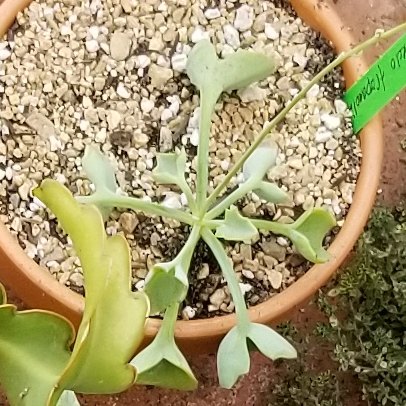
Senecio tropaeolifolius
False Nasturtium
False Nasturtium is a succulent plant that forms small evergreen clump up to 20 cm tall and up to 40 cm wide. Mature clumps are topped with spikes of terminal clusters of bright yellow, daisy-like flowers. The Senecio genus includes annual or perennial herbs, shrubs, and climbers that are suitable for the garden or conservatory. Most species have fleshy, glabrous, pale gray green leaves, daisy-like flowers, often yellow. They are widely spread and some varieties are invasive, toxic and considered weeds!
Contributed by @disneyfacts
-
Full sun to partial shade
-
Very little water
-
Not Frost hardy
-
Free draining
Common name
False Nasturtium
Latin name
Senecio tropaeolifolius
type
Succulent
family
Asteraceae
ph
5.0 - 7.5 Acid - Neutral
Plant & bloom calendar
-
Best time to plant
full grown dimensions
 0.40 M
0.20 M
0.40 M
0.20 M
Senecio tropaeolifolius
False Nasturtium is a succulent plant that forms small evergreen clump up to 20 cm tall and up to 40 cm wide. Mature clumps are topped with spikes of terminal clusters of bright yellow, daisy-like flowers. The Senecio genus includes annual or perennial herbs, shrubs, and climbers that are suitable for the garden or conservatory. Most species have fleshy, glabrous, pale gray green leaves, daisy-like flowers, often yellow. They are widely spread and some varieties are invasive, toxic and considered weeds!
Planting
From Early Spring TO Early Spring
Plant in full sun to light shade and give little to no irrigation but with occasional summer irrigation will hold the leaves on the stems which otherwise fall off. Though often listed for frost free gardens this plant has proven stem hardy to 25° F during our January 2007 freeze. Makes an interesting and wild plant in the garden or in a large pot.










